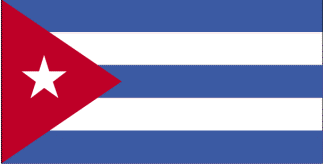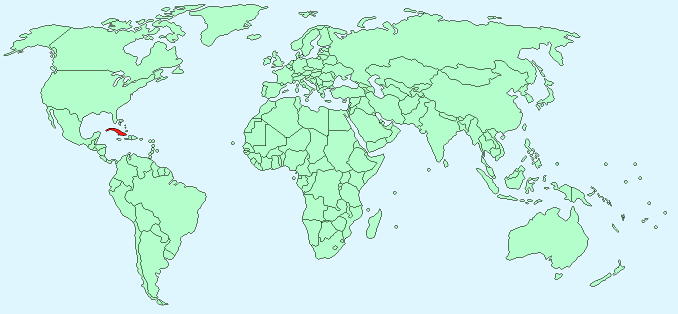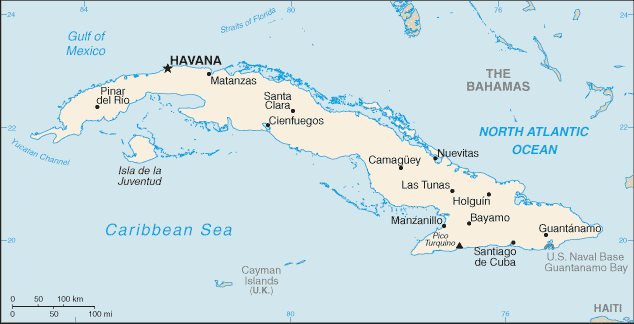Cuba


Continent – North America
Region – Caribbean
Size – 110,860 km²
Geography – flat plains, mountains in south-east
Language – Spanish
Religion – official athiest, unofficial – 85% Roman Catholic
Monetary Unit – Cuban Peso
Natural Resources – cobalt, nickel, iron ore, chromium, copper, salt, timber, silica, petroleum, arable land
Agriculture – sugar, tobacco, citrus, coffee, rice, potatoes, beans; livestock
Industry – sugar, petroleum, tobacco, construction, nickel, steel, cement, agricultural machinery, pharmaceuticals

Neighbouring Countries – none
Population – 11,047,251 (2014 estimate)
Population Growth Rate – 0.27%
Average Life Expectancy – 77.0
Capital City – Havana (2,106,146)
Highest Mountain – Pico Turquino (2005m)
Longest River – Cauto River (343 km)
Climate – tropical, hot and windy 18°C to 32°C
Yearly Rainfall – 120 cm (approx) mostly May to October
Plant Life – 6,000+ native flowers, grasses, swamp marsh vegetation, mangrove, pine, Royal Palm, pepper, pineapple
Animal Life – tropical bats, rodents, reptiles, insects, crocodiles
Harvard Reference for this page:
Heather Y Wheeler. (2015). Cuba. Available: https://www.naturalhistoryonthenet.com/Facts_Figures/Country_Facts/cuba.htm. Last accessed Tuesday, July 19, 2016
Facts and Figures Pages
